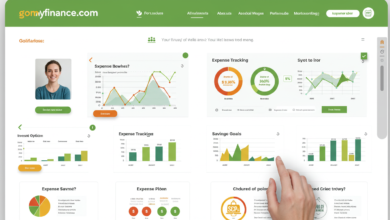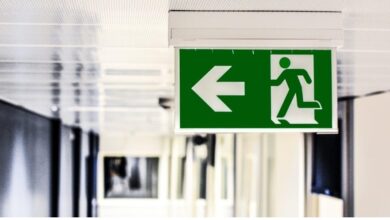
You might feel overwhelmed when you head to the grocery store. Don’t be! Follow these tips to make your shopping trip go more smoothly. Before you head to the store, make a list of items you need. These tips will help you get the items you need without spending more than you have to. For example, you can avoid buying food when you’re hungry, use a map, and shop at two stores at once.
Avoiding shopping when you’re hungry
According to Jeff Mauro, a food writer and chef, people who shop when they’re hungry are more likely to buy more than they need. Eating a balanced meal before you go to the store will help prevent the temptation to buy impulsively. And if you’re hungry, you’ll be less likely to make bad choices, such as fast food. Having a plan for your shopping will also help you stick to the diet.
Visiting the local grocery store is an excellent way to shop for cheaper and fresher food. While it can be a hassle, you’ll save more money by shopping there. Also, if you can, try to buy produce at your local farmer’s market. Not only are produce and meats cheaper than those at the grocery store, but store brand items are often as good. This way, you’ll know exactly what you’re getting without overspending.
Buying food when you’re hungry can be a risky habit, especially if you have a limited budget. The smells and tastes of food can trigger our taste buds and encourage us to buy more than we need. Similarly, if you’re shopping alone, you’re more likely to stick to your list and buy only what you need. If you’re with a group of friends, you might be more inclined to purchase more food than you intended.
Another risk of grocery shopping while hungry is that you’ll end up buying a lot of convenience foods and snacks. Not only are you more likely to buy convenience foods when you’re hungry, but you’ll also be less likely to purchase healthy items. Avoid shopping while you’re hungry and keep yourself hydrated throughout your shopping trip. By following these tips, you’ll be able to stick to your grocery list more easily and avoid wasting unnecessary calories and unnecessary pounds.
Using a map
Before you begin your journey to the nearest grocery store, use a map to find landmarks. These landmarks can be large signs or buildings that resemble the store. However, these can be difficult to find in urban areas. Look for a sign on a major road, or check the traffic to ensure you’ll get there on time. Once you’ve found the landmark, follow the directions to the store.
Next, use your navigation system to find the nearest grocery store. The next step is to plug in your phone’s GPS or Apple CarPlay to connect the information system of your car to Google Maps. The GPS feature in the phone can tell you the distance to the store. If you go off course by 50 feet, retrace your steps until you reach the store. Using a map to navigate to the closest grocery store is very helpful, especially when you’re unfamiliar with the area.
Another great tool is a mapping app. A map of grocery stores will give you the distance and name of the store you’re looking for. You can also use a store’s website or app to find out what products they sell and how to get to them. If you’re unsure about the distance, use a Google Maps app to find out for sure. Using a map to navigate to the closest grocery store will help you find what you need and avoid wasting time in the process.
Using a map to navigate to the nearest grocery store can help you find the grocery store within walking distance. It takes time, but it’s worth it in the end. You can use a GPS to find the store, but you may not have the best cell reception, and a map is essential to finding your way. And remember to keep an eye out for street signs. If you don’t have a GPS, you can use a smartphone GPS app for directions.
Shopping at two stores
You’ve probably heard of the concept of shopping at two stores to find the closest grocery store. Whether you’re preparing a meal for your family or looking for a few essential items, the grocery store can help you with both. The two-in-one concept allows you to compare prices, total them up, and see how much each one costs in a five-mile radius. But what is the difference between the two grocery stores?
Using coupons
Using coupons to navigate to the closest grocery stores is becoming increasingly popular, but what do you need to do? Here are some strategies to save money on food. First of all, be prepared to ask for a discount on items nearing their “sell by” date. Remember that this doesn’t mean the food is going to spoil, but it means that the price is not final yet. So ask for a discount or a coupon and you may be pleasantly surprised.
Next, you should collect different kinds of coupons and use them accordingly. Use the coupons as currency and seek out the best store deals and sales. Your best resource for these are the weekly grocery store flyers. They feature various promotions, sale products, and various store deals. These can save you money by up to 50%. You can also combine different types of coupons to maximize your savings. For example, you can use a $1 off coupon to save on two boxes of Cheerios or a $1 off 1 lb package of Jennie-O turkey breast.
As grocery is going digital, it is essential for retailers to develop an omnichannel coupon strategy. An intelligent mix of digital and print coupons can leverage market data and be customized to the needs of individual shoppers. According to Symphony RetailAI, “An intelligent mix of digital and print coupons can reach a broad base of consumers while also reaching primary shoppers.”
Another option is to search for double-digit discount coupons in different magazines and newspapers. You can also use online search engines to find double-coupon stores. You can also make a day trip to the nearest store to save money. If you’re unable to find a double-coupon grocery store in your neighborhood, try calling the store directly to find out when they will have double-digit discounts. The extra legwork can lead to major savings on food at your local grocery store.
Avoiding promotions at the grocery store
Keeping an eye on prices at the grocery store is crucial to avoiding the temptation of overbuying. While it is easy to get sucked into an enticing sales ad, you should also avoid impulse purchases. Grocery sales often use the same tactics as coupons to encourage consumers to buy more. It is also important to carefully read labels to identify hidden deals and promotions. In addition, shoppers should avoid shopping for food when they are hungry or distracted by young children.
Most grocery sales are seasonal. Most items are discounted at some point in each month. Stocking up on sale items can help you avoid paying full price later. Look for items that have been reduced at least 50 percent. These items are usually displayed in the produce section and may not be the best deals at the store. In addition to reading the fine print, it is important to compare prices of similar items to make sure you’re getting the best deal.
Lastly, grocery stores offer many conveniences. However, that convenience may come at a price. Buying pre-cut items, snack-sized treats, or non-food items can cost more than you intended. You can avoid these by simply buying smaller amounts of each item. In some cases, a larger purchase may save you time, but the grocery store may not offer the best price. If you’re looking for a cheaper option, consider a larger supermarket.



